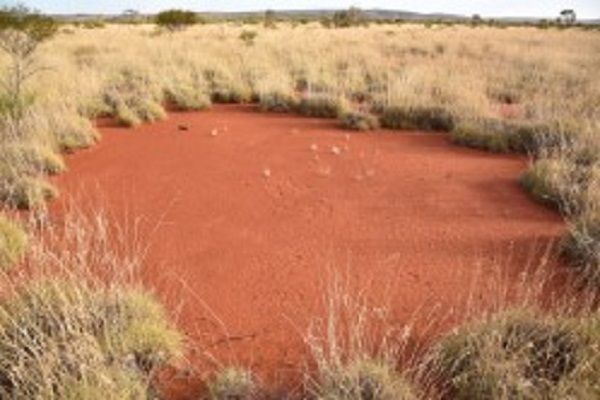German study discovers ‘fairy circles’ in Australian outback
Uniformly spaced gaps spotted before only in Namibia grassland

Dry grasslands of Namibia used to be the only place in the world where “fairy circles” could be found. These are circular, barren patches of land that form a highly regular pattern.
However, a new study, published in the journal PNAS, found the same structures in the uninhabited Australian outback. The theory of researchers from the Helmholtz Centre for Environment Research (UFZ) in Leipzig, Germany, who worked with Australian and Israeli scientists, is that the fairy circles is the result of how plants organise in response to water shortage.
Bronwyn Bell, the Australian researcher found the fairy circles in the town of Newman and sent an aerial photo of the place to the centre in 2014. Dr Stephan Getzin, a fairy circle expert from UFZ, and Hezi Yizhaq, an Israeli scientists, flew to Australia to measure the barren circles.
They also compared the surface temperatures with the vegetated area and charted indications of ants and termites in four parts of the place. The two likewise observed the way water drained in those places and got soil samples which they analysed in the lab in Leipzig.
Finally, they added aerial image evaluations, statistical analyses of the landscape patterns and computer simulation. Doing all these steps led the scientists to conclude that the fairy circles in Australia are similar to those in Namibia, even if the two countries are 10,000 kilometres apart.

When seen from the surface, the fairy circles appear like only an ordinary dry patch. However, when viewed from the air, it appear as uniformly space gaps usually shaped like a hexagon, observes Gizmodo.
Their discovery of the fairy patches in Australia provided new evidence to support the UFZ’s theory how the patches are formed. In Namibia, there were two or three species of termites or ants that scuttle around on or in the fairy patches. However, no such insect movement were observed in the outback.
Getzin says it led them to conclude that the barren patches are not the product of animal movement but the Triodia genus, the dominant grasses, in the direct vicinity of the fairy circles. The same grass species also form other drought patterns such as stripes, labyrinths and spot patterns with individual plants that are surrounded by the bare earth.
Because of the rare rain showers in the Australian outback, Getzin points out that the Namibian fairy circles are more permeable and precipitation drains away with ease due to the sandy soils, unlike Australia’s loam soil not protected by vegetation. Although the conditions in the two countries are different, it produces the same vegetation pattern since both systems of gaps are triggered by the same instability.
With the discovery, Getzin believes there are other fairy patches in other parts of the world and UFZ wants to investigate it too.





















